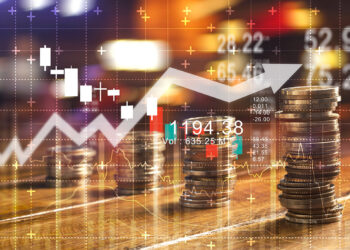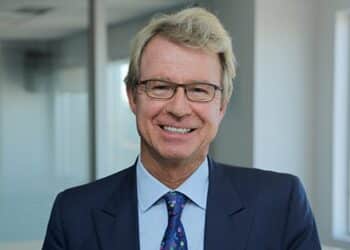The latest conflict between Israel and Iran, now into its sixth day (19 June) with no sign of easing, reignited demand for the precious metal, a long regarded safe haven in turbulent times.
Geopolitical tensions stemming from the Israel–Iran attacks have overshadowed positive US–China trade developments and stronger-than-expected economic data, with gold prices surging 2.9 per cent last week to US$3,435 per ounce amid mounting global uncertainty.
According to the World Gold Council’s Gold Return Attribution Model, the recent surge in gold prices was driven by heightened geopolitical risks (adding 0.7 per cent), a weaker US dollar (0.3 per cent), and lower bond yields (0.3 per cent). Strengthening demand for gold-backed exchange-traded funds (ETF) and improved positioning in options markets have also reinforced the metal’s upward trajectory.
The World Gold Council noted that gold completed a technical “triangle” continuation pattern, potentially signalling a resumption of its long-term uptrend, with safe-haven demand expected to remain strong as geopolitical risks move “front and centre” for investors.
However, following this initial spike, the price of gold has slumped during the week, settling at US$3,380.33 per ounce as of 19 June 2025 (11:56am AEST), according to ABC Bullion.
Despite this minor pullback, general manager of ABC Bullion, Jordan Eliseo, told InvestorDaily that gold is “still up more than US$100 per ounce (+3 per cent) since the start of June” as investors built up defensive positioning in assets like gold for most of the month.
Eliseo further noted that gold has risen by almost 30 per cent in US dollar terms, “dramatically outperforming other assets” when looking at calendar 2025 as a whole.
“Given the strength that we have seen in the gold market, a period of consolidation is to be expected, even with geopolitical risk factors top of mind like they are today,” he said.
Commenting on this consolidation, AMP’s chief economist, Shane Oliver, said: “I think investors are reasonably relaxed about the war and appear to be assuming that any disruption to oil supplies will be minimal or brief.”
“This explains why shares, oil and gold have all settled a bit after an initial risk-off impact on the back of the first attacks late last week,” he said. “This appears to reflect the relatively contained nature of the missile exchanges so far – with Iranian oil export infrastructure being spared.”
Oliver speculated that nervousness could spike should the US decide to intervene in the conflict with the use of its bunker busting bombs, “as there will be concern that Iran may lash out and maybe try and disrupt oil supplies”.
“That could be short-lived but we don’t know at present,” he said. “Alternatively, if Iran ‘surrenders’ and returns to talks then it just all settles down again.”
At this stage, he noted, investors are waiting to see what happens and are likely avoiding big bets including in gold.
Moreover, Eliseo added that gold’s price movements over the past week have been unsurprising.
“Gold has always been a barometer of uncertainty,” Eliseo said. “In times like these, when markets are rattled and the outlook shifts rapidly, investors instinctively look to gold as a trusted store of value.”
He added: “The speed of the recent price rise, which builds on the record start to the year we had already seen for gold, shows just how quickly sentiment can shift when global stability is in question.”
Is it time to exit gold?
In a piece posted to LinkedIn, chief investment officer at ETF Shares, David Tuckwell, suggested that with gold returning to “all-time highs and front-page headlines”, the rally has presented a “timely opportunity to reduce exposure and take profits – even if it means potentially missing another leg up”.
“Since January 2023, the gold price has nearly doubled in Australian dollar terms. In 2025 alone, it’s up almost 25 per cent,” Tuckwell said.
“What that means in wealth creation terms is quite remarkable. In 2022 there was roughly US$12 trillion worth of wealth in above-ground gold.
“Thanks to this rally – there is now US$24 trillion in gold. Almost US$12 trillion in paper wealth has been created in 30-ish months.”
Meanwhile, according to new 2025 data from the World Gold Council’s Central Bank Gold Reserves survey, nearly 43 per cent of central banks have indicated plans to add to their own reserves this year, despite record-high prices.
Among central banks in emerging markets and developing economies (EMDE), 48 per cent said they expected to increase their gold reserves this year, compared to just 21 per cent of their counterparts in advanced economies.
The survey further revealed that there has also been a significant move towards domestic storage, with 59 per cent of central banks now holding gold in-country, up from 41 per cent in 2024.
More than nine in 10 reserve managers now expect global central banks to increase their gold holdings over the next 12 months – a record high since the survey began in 2019. This reflects a 17 per cent increase from last year’s expectations.
Additionally, 73 per cent of reserve managers anticipate a reduction in US dollar holdings over the next five years, while expecting the euro, renminbi and gold to gain a larger share.
Inflation and geopolitical instability were among the leading concerns for EMDEs, while interest rate levels remained important for both groups.
Further survey findings revealed 85 per cent of respondents cited its performance in times of crisis as a key reason to hold it, while 81 per cent viewed it as an effective portfolio diversifier and 80 per cent valued it as a long-term store of value.
Shaokai Fan, global head of central banks and head of Asia-Pacific (ex-China), said nearly half of central bank respondents intending to increase gold holdings over 2025 represents an “important milestone” after the survey’s eight-year run.
“This is remarkable, especially considering how many record-high prices we’ve hit so far in 2025.
“Notably, this reflects the current global financial and geopolitical environments. Gold remains a strategic asset as the world faces uncertainty and tumult,” Fan said. “Central banks are concerned about interest rates, inflation, and instability – all reasons to turn to gold to mitigate risk.”






